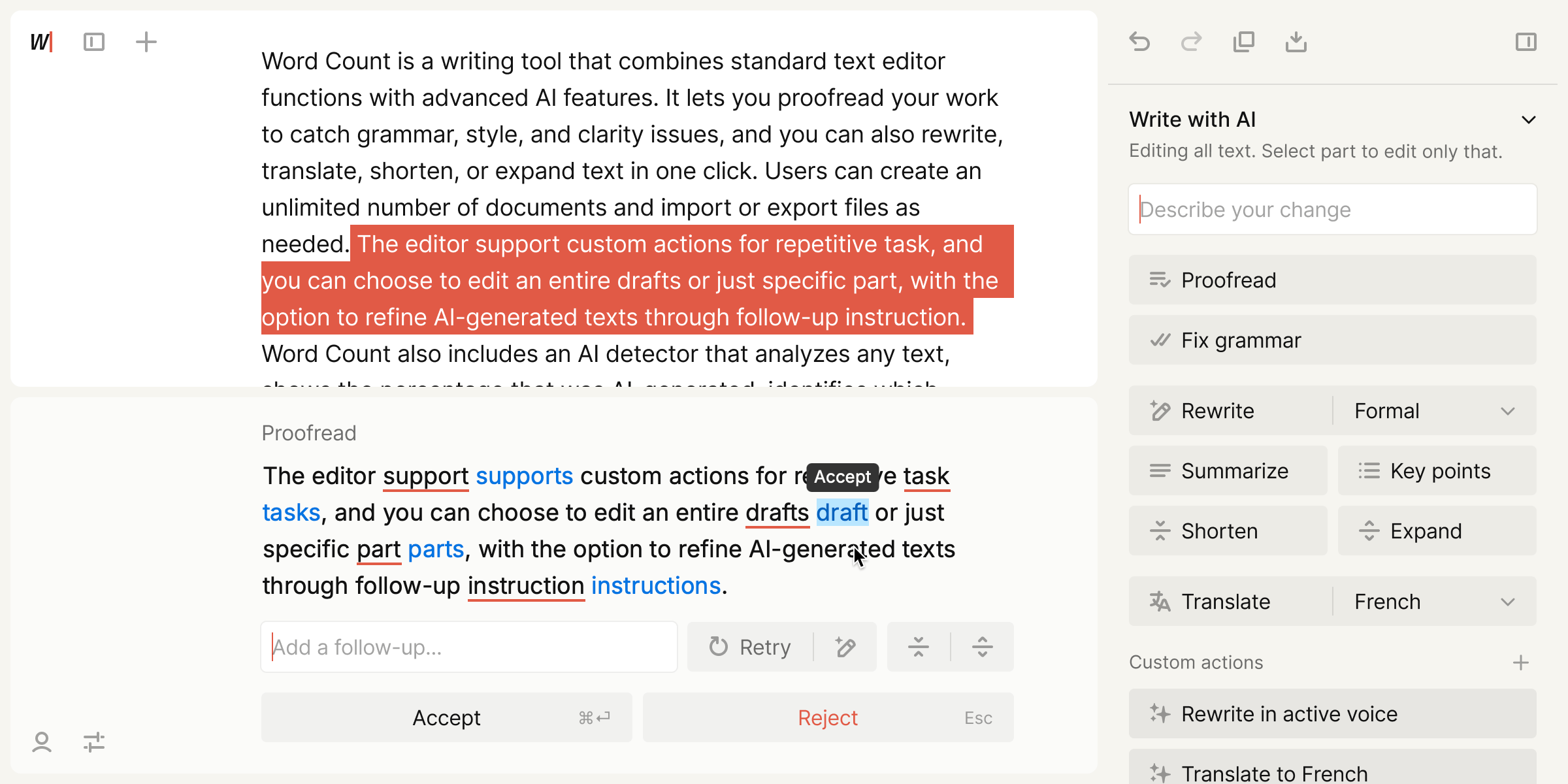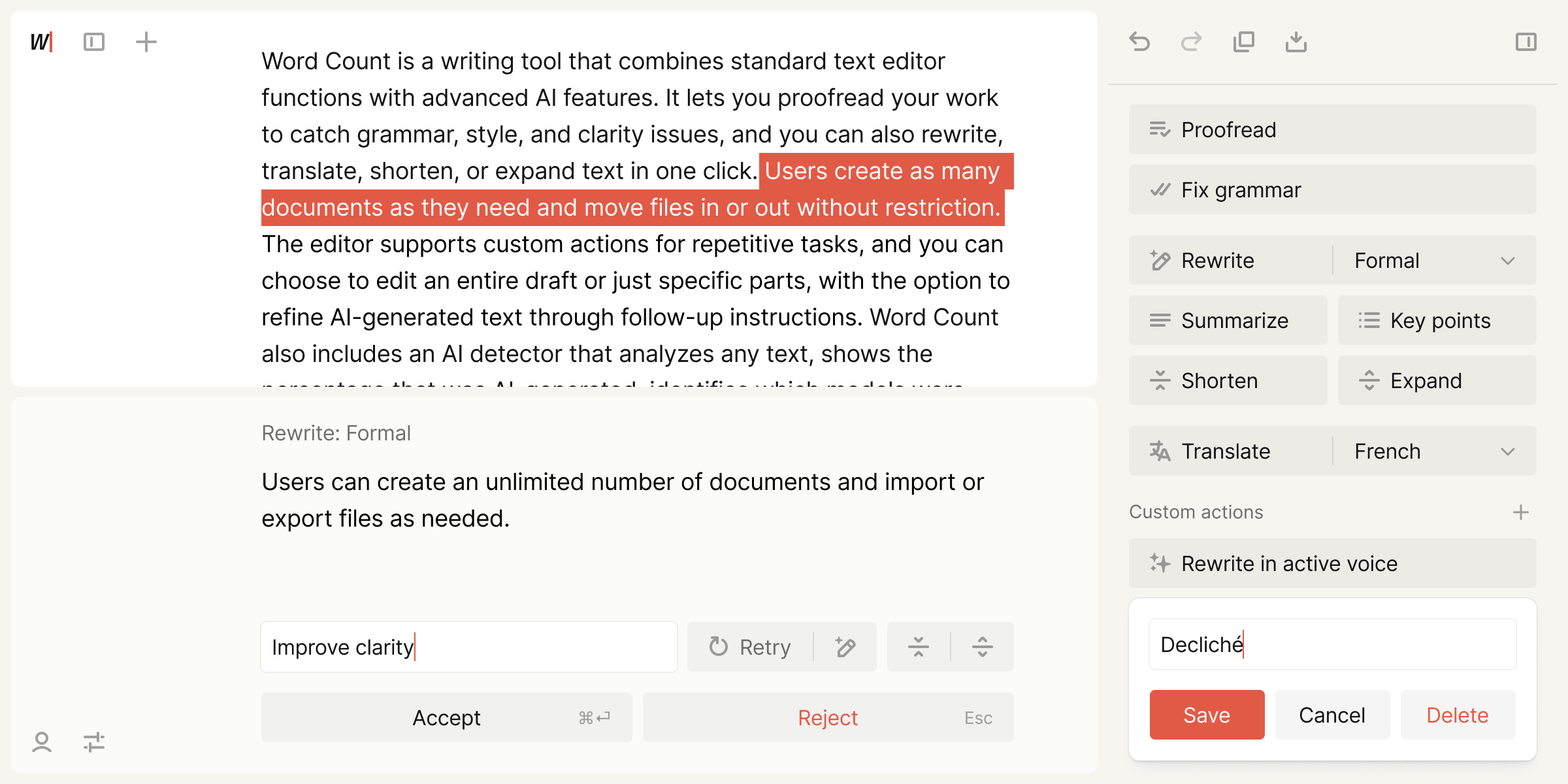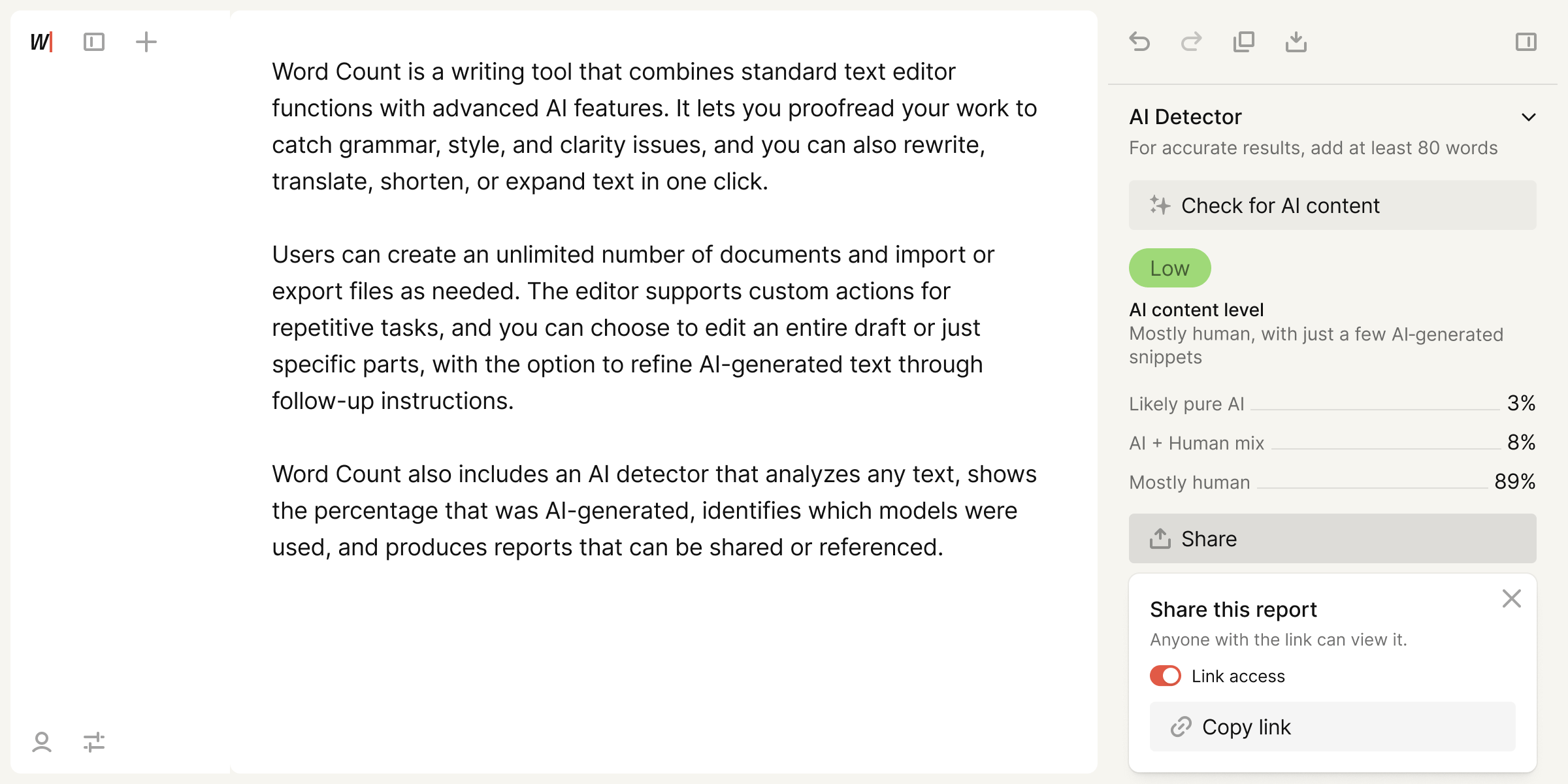無料の AI メタディスクリプションジェネレータ
記事の有益かつ SEO フレンドリーなメタディスクリプションを迅速かつ簡単に作成します。
すべてのライティングツールを一箇所に
文章を校正し、文法、文章のスタイルや明瞭さといった問題を修正します。ワンクリックでテキストの書き直しや翻訳ができ、より短い、または長い文に書き換えることも可能です。作成できるドキュメントの件数に上限はなく、テキストファイルは簡単にインポートおよびエクスポートができます。

AI の活用で、ライティング作業がよりスピーディーに
頻繁に繰り返すタスク用にカスタムアクションを設定することが可能です。下書き 1 件丸ごと、または選択した部分のみを編集できます。生成されたテキストは、フォローアップ指示を参考にして内容を修正しましょう。

信頼できる AI 検出
あるテキストが AI で書かれたものか知りたい時、どうしていますか?AI 検出機能を使えば、テキストのどの部分が AI 生成されているかや、どの AI モデルが使用されたかを確認し、信頼性の高いレポートを作成して共有することができます。

Ahrefs のメタディスクリプションジェネレーターの使用事例
- 検索エンジン最適化(SEO):Ahrefs のメタディスクリプションジェネレーターは、ウェブサイトのメタディスクリプションを検索エンジンでのビジビリティを高めるために最適化したいウェブサイトのオーナー、デジタルマーケター、SEO 専門家にとって価値のあるツールです。 関連するキーワードとウェブページの内容の簡潔な説明を入力すると、このツールはページを正確に表現し、検索エンジンのユーザーからのクリックを引きつける、簡潔で魅力的なメタディスクリプションを生成します。 この使用例は、ウェブサイトの検索エンジン結果ページにおけるランキングと CTR の向上に役立ちます。
- ウェブサイトの CTR 向上 Ahrefs のメタディスクリプションジェネレーターは、魅力的なメタディスクリプションを作成することで、ウェブページのクリック率(CTR)の向上をサポートします。 ウェブページの主な特徴、メリット、または独自のセールスポイントを入力することで、ユーザーのクリックやページへの訪問を促す、説得力があり注目を集めるメタディスクリプションを生成することができます。 この事例は、ユーザーエンゲージメントを高め、ウェブサイトへのオーガニックトラフィックを増やし、全体的なユーザーエクスペリエンスを向上させるのに役立ちます。
- ソーシャルメディアでのコンテンツ共有:個人でもビジネスでも、ソーシャルメディアプラットフォームでコンテンツを共有する際に、Ahrefs のディスクリプションジェネレーターを活用して魅力的なメタディスクリプションを作成することができます。 コンテンツの簡潔な要約や主要なハイライトを入力すると、ツールはメタディスクリプションを生成しソーシャルメディアのユーザーがクリックして共有コンテンツとの対話するように促します。 この使用例は、ソーシャルメディアプラットフォーム上で共有されるコンテンツの視認性とエンゲージメントを最大化するのに役立ちます。
Ahrefs の無料の AI メタディスクリプションジェネレータ を支える技術
Ahrefs の 無料の AI メタディスクリプションジェネレータ は、大量のテキストデータからパターン、文法、語彙を学習する言語モデルを使用しています。その知識を利用して、与えられたプロンプトや入力に基づいて人間が作るようなテキストを生成します。 生成されたテキストは、モデルが学習した情報と入力に対する理解の両方を組み合わせたものです。
その他の便利なライティングツール
すべての AI ツール →無料の AI ブログ記事アイデア作成ツール
ブログへのトラフィックを増やすために、すぐに使える SEO に優れたブログ記事のアイデアを考えてみましょう。
無料 AI ブログタイトルジェネレーター
SEO フレンドリーで魅力のあるブログ投稿タイトルを生成し、トラフィックを呼び込む多様なコンテンツを作ります。
無料の AI コンテンツアイデアジェネレーター
さまざまなクリエイティブなアイデアを生み出すことで、次のコンテンツのインスピレーションを得ましょう。
無料の AI 画像代替テキストジェネレーター
AI を搭載したツールを使用して、画像の代替テキストを簡単に生成します。手間をかけずにアクセシビリティと SEO を改善します。
無料の AI タイトルジェネレータ
無料のタイトルメーカーを使用して最適化されたタイトルを生成し、検索エンジンでの可視性を向上します。
無料の AI ビデオスクリプト生成器
無料の AI ツールで魅力的なビデオスクリプトを時間をかけずに作成しましょう。魅力的な動画コンテンツを数分で簡単に作成します。